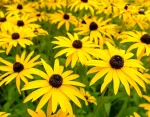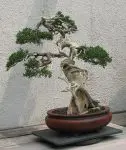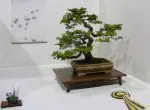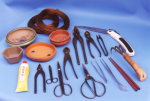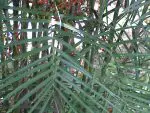This post contains affiliate links. If you buy something from one of our links we may earn a commission. Thanks
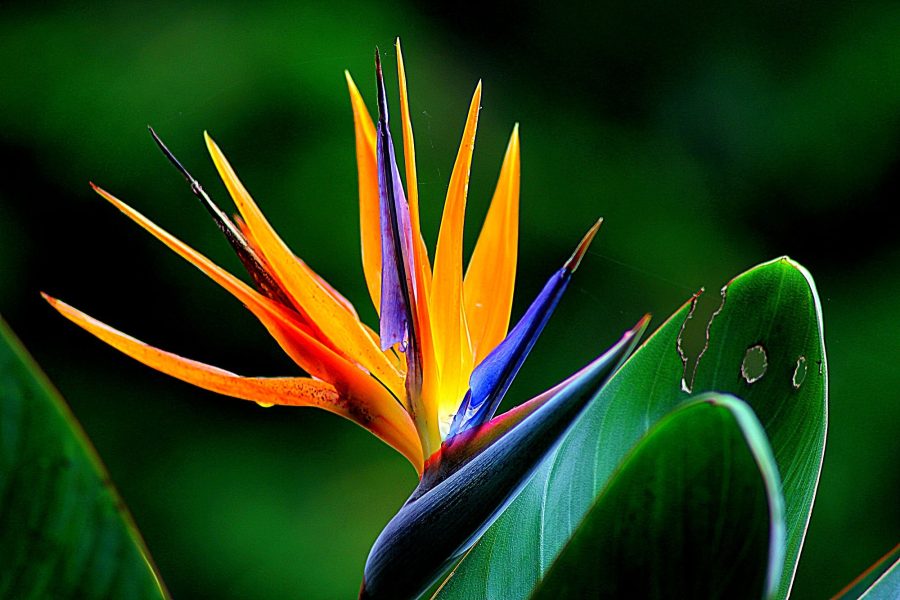
Looking for an exotic indoor plant? Discover how to care for your bird of paradise plant indoors with our helpful tips and tricks!
Growing Bird Of Paradise plant indoors requires a well-lit spot, ideally near a sunny window but not in direct sunlight. Maintain a consistent watering schedule, allowing the soil to dry out between waterings.
Regular feeding with a slow-release fertilizer and maintaining a temperature between 65-70°F helps in ensuring healthy growth. Ensure the pot has good drainage to prevent waterlogging.
Welcome to our blog post all about bird of paradise plant care indoors!
If you’re looking for an eye-catching and exotic addition to your indoor plant collection, you’ve come to the right place.
We’ll walk you through everything you need to know about caring for your bird of paradise plant, from light and water requirements to pruning and propagation tips.
So grab a cup of tea, get comfortable, and let’s dive into the wonderful world of bird of paradise plants!
Introducing Bird Of Paradise Plant Care Indoors
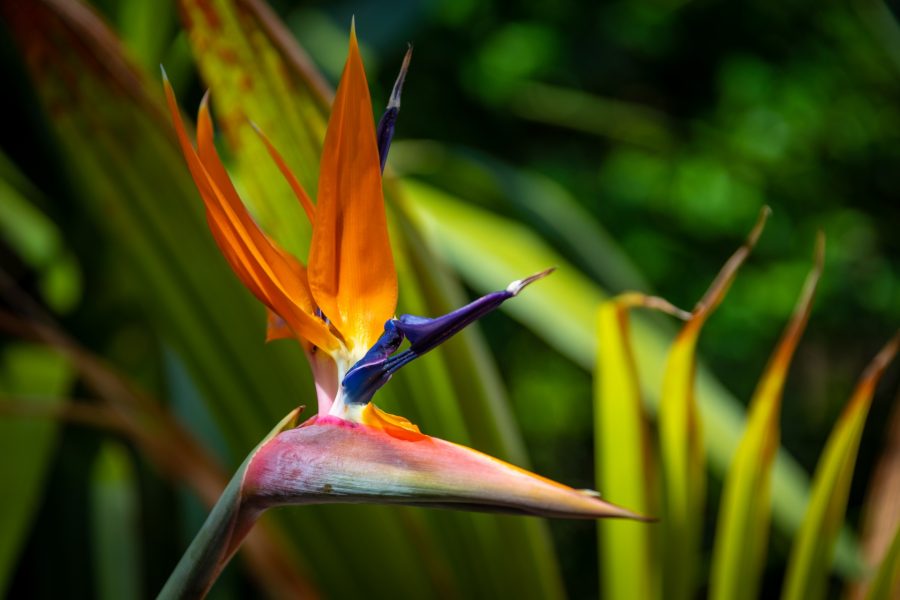
Hey there! Are you a plant lover looking to add a tropical vibe to your indoor garden?
Look no further than the bird of paradise plant! This tropical beauty is sure to make a statement in any space, with its vibrant orange and blue blooms resembling the plumes of an exotic bird.
But before you rush out to buy one, it’s important to know how to properly care for this stunning plant.
In this blog post, we’ll cover all the basics of bird of paradise plant care indoors, so you can keep your plant healthy and happy for years to come. Let’s get started!
Overview of the Bird of Paradise Plant
The bird of paradise plant, also known by its scientific name as Strelitzia, is a tropical plant native to South Africa.
Its unique, bird-like flowers are what give it its name, with bright orange and blue petals resembling the feathers of a bird.
The plant itself can grow up to six feet tall, making it a statement piece in any room.
It’s a relatively low-maintenance plant that can thrive indoors if given the right care.
According to Wikipedia: Strelitzia is a genus of five species of perennial plants, native to South Africa. It belongs to the plant family Strelitziaceae. A common name of the genus is bird of paradise flower/plant, because of a resemblance of its flowers to birds-of-paradise. In South Africa, it is commonly known as a crane flower. Two of the species, S. nicolai and S. reginae, are frequently grown as houseplants.
Why is it a popular indoor plant?
You can buy a Bird Of Paradise plant here
There are a few reasons why bird of paradise plants have become increasingly popular as indoor plants in recent years.
For one, their striking appearance makes them a showstopper in any space.
Additionally, they are relatively easy to care for and can tolerate a variety of lighting conditions, from bright indirect light to lower light levels.
They also help to purify the air, making them a great addition to any home.
Purpose of the Blog Post
The purpose of this blog post is to provide you with all the information you need to know about caring for a bird of paradise plant indoors.
We’ll cover everything from light and water requirements to potting and pruning techniques.
By the end of this post, you’ll have all the knowledge you need to help your bird of paradise plant thrive in your home. So let’s dive in!
II. Bird Of Paradise Plant Care Indoors Basics
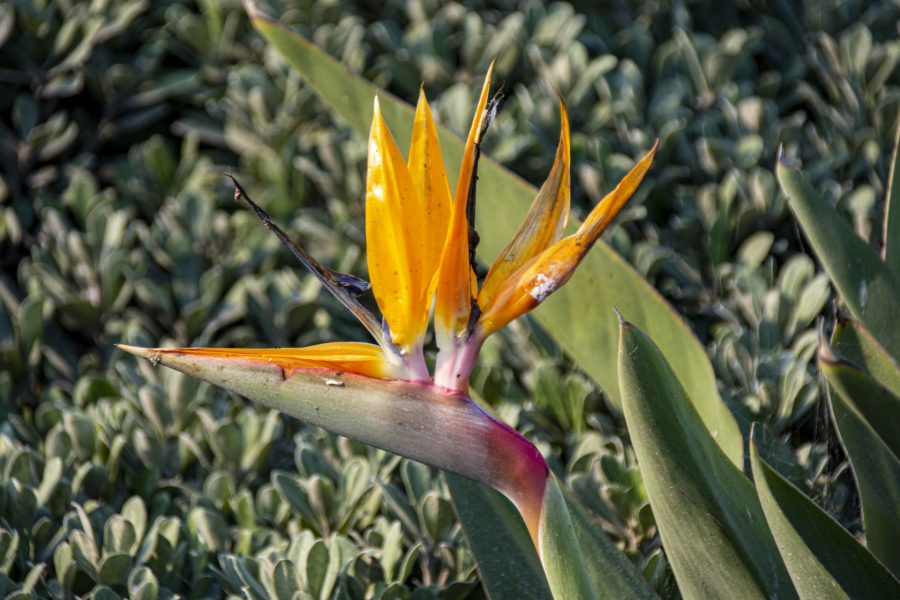
Ready to learn the basics of bird of paradise plant care? Let’s get started!
In this section, we’ll cover the essential care requirements that your bird of paradise plant needs to stay healthy and happy indoors.
From lighting and watering to soil and temperature, we’ve got you covered.
So grab a notebook and pen, and let’s dive into the world of bird of paradise plant care!
Light Requirements
Bird of paradise plants require bright light and indirect sunlight to thrive.
They can tolerate direct sunlight and need it to flower.
Place your plant near a bright, sunny south-facing window, but make sure it’s not in direct sunlight for more than a few hours a day.
If your plant isn’t getting enough light, its leaves may start to turn yellow or brown. Bird of paradise is known for its orange crane-like flowers.
The best way to make sure you get bird of paradise flowers is to make sure it gets plenty of light.
If you can’t give it any full sun consider using LED grow lights to provide supplemental light.
Watering
When it comes to watering your bird of paradise plant, it’s important to strike a balance.
They are thirsty plants but you don’t want to overwater or underwater them.
A good rule of thumb is to wait until the top inch of soil is dry before watering, then give it a thorough watering until water drains out the bottom of the pot.
Don’t let your plant sit in standing water, as this can lead to root rot.
In general, bird of paradise plants need less water in the winter months.
Also, avoid using tap water as it contains chloramines and fluorides which can build up in the soil and harm the roots.
Use distilled water, RO water, or rainwater.
Soil
The soil you use for your bird of paradise plant is important for its overall health.
It should be well-draining and rich in nutrients. You can use a commercial potting mix, but add perlite or sand to improve drainage.
You can also make your own mix using equal parts of peat moss, coarse sand, and perlite.
I prefer using coco coir and perlite as a growing medium.
Temperature and Humidity
Bird of paradise plants are native to warm climates and prefer warm temperatures, between 60 and 70 degrees Fahrenheit.
They can tolerate temperatures as low as 50 degrees Fahrenheit but may not thrive.
They also prefer humid conditions, so consider using a humidifier or placing a tray of water near your plant to increase humidity levels.
If the air in your home is particularly dry, mist your plant’s leaves with water once a week to keep them hydrated.
III. Choosing the Right Pot and Soil Mix
One of the most important factors in the health of your bird of paradise plant is choosing the right pot and soil mix.
This plant needs moist soil but not soggy soil. In this section, we’ll go over the benefits of using coco coir and perlite in your soil mix, as well as other tips for choosing the perfect pot for your plant.
Coco coir is a sustainable and eco-friendly alternative to traditional peat moss, and perlite helps to improve soil drainage and aeration.
By the end of this section, you’ll be equipped with all the knowledge you need to give your bird of paradise plant the perfect home.
So let’s get started!
Selecting the Right Pot
Choosing the right pot for your bird of paradise plant is essential for its health and growth.
You’ll want to select a pot that is slightly larger than the current one and has drainage holes to allow excess water to escape.
Look for pots made of porous materials like terra cotta, as they allow for better airflow to the plant’s roots.
Choosing the Right Soil Mix
When it comes to choosing the right soil mix for your bird of paradise plant, it’s important to opt for a well-draining mix that is rich in nutrients.
Coco coir is a sustainable alternative to traditional peat moss and helps to improve soil structure and water retention.
Perlite is another great addition to your soil mix, as it helps to improve drainage and aeration.
You can also add some organic matter, like compost, to give your plant an extra nutrient boost.
Repotting
As your bird of paradise plant grows, it may outgrow its current pot and your bird of paradise may need repotting.
You’ll know it’s time to repot when you see roots coming out of the drainage holes, or the soil dries out too quickly after watering.
Repotting is also an opportunity to refresh your plant’s soil mix and give it some fresh nutrients.
Be gentle when removing your plant from its current pot, and don’t damage the roots.
After repotting, give your plant some time to adjust to its new home before resuming normal care.
VIII. Fertilizing
Fertilizing your bird of paradise plant is an important aspect of its care.
During the growing season (spring and summer), you should fertilize your plant every two weeks with a balanced, water-soluble fertilizer.
Be sure to follow the instructions on the fertilizer packaging for the correct amount to use.
During the dormant season (fall and winter), you can reduce the frequency of fertilizing to once a month.
It’s also a good idea to use a fertilizer that is high in phosphorus during the blooming period to promote healthy flower growth.
It’s important not to over-fertilize your bird of paradise plant, as this can cause damage to the roots and leaves.
Always err on the side of caution and use less fertilizer rather than more.
IV. Pruning and Propagation
Pruning and propagation are essential parts of bird of paradise plant care that can help keep your plant healthy and promote new growth.
In this section, we’ll go over some simple techniques for pruning your plant, as well as tips for propagating it.
Pruning your plant can help keep it from becoming too large and unruly, and can also help get rid of dead or damaged foliage.
Propagation, on the other hand, can be a great way to share your love of plants with others and expand your collection.
By the end of this section, you’ll be equipped with all the knowledge you need to keep your bird of paradise plant looking its best. So let’s dive in!
Pruning Techniques
Pruning your bird of paradise plant can help promote healthy growth and keep it looking tidy.
When pruning, it’s important to only remove dead or damaged foliage, as cutting back healthy leaves can harm the plant.
You can also prune away any suckers or offshoots that are growing from the base of the plant to help control its size.
If your plant has become too large for its space, you can also prune back the stems to a manageable size.
Propagation Methods
Propagating your bird of paradise plant can be a fun and rewarding way to expand your plant collection.
One common method of propagation is division, which involves separating the plant into smaller sections and repotting them separately.
Another method is stem-cutting propagation, where you take a cutting from a healthy stem and encourage it to grow roots in water or soil.
Growing from seed
You can buy Bird Of Paradise seeds here
Growing your bird of paradise plant from seed is another propagation method that can be a fun and rewarding experience.
However, it can also be a more challenging process than other methods, as the seeds can take several weeks to germinate and require a bit more care and attention in the early stages of growth.
If you’re interested in growing your plant from seed, we recommend doing some research and gathering all the necessary supplies before starting.
We don’t cover seed propagation in detail in this blog post, but there are plenty of online resources and guides available to help you get started.
Common Problems and Troubleshooting
Even with proper care, your bird of paradise plant may experience some common problems.
One common issue is root rot, which can occur if the plant is overwatered or if the soil mix doesn’t allow for adequate drainage.
Another problem is pest infestations, such as spider mites or mealybugs.
If you notice any issues with your plant, it’s important to diagnose the problem quickly and take action to treat it.
We’ll cover some common troubleshooting tips in this section to help you keep your plant healthy and happy.
IX. Common Insect Pests and Treatments
While bird of paradise plants are generally hardy and resistant to pests, they can still fall prey to a few common insects.
Here are some of the most common pests to look out for:
• Mealybugs – small white, cottony insects that appear on the undersides of leaves and near the base of the plant. They can be treated with a mixture of water and dish soap, or with neem oil.
• Spider Mites – tiny reddish-brown insects that create webs on the undersides of leaves. They can be treated with a mixture of water and dish soap, or with insecticidal soap.
• Scale – small brown, round insects that attach themselves to the leaves and stems of the plant. They can be treated with neem oil or with a solution of alcohol and water.
• Thrips – tiny black or brown insects that can cause leaves to curl and distort. They can be treated with insecticidal soap or with neem oil.
It’s important to treat any pest infestations as soon as you notice them, as they can quickly spread and cause significant damage to your plant.
Always follow the instructions on the insecticide packaging and avoid using too much, as this can damage the plant.
V. Common Bird of Paradise Varieties
Did you know that there are several different types of bird of paradise plants, each with its own unique features and characteristics?
In this section, we’ll explore some of the most common Strelitzia species of bird of paradise plants that you might come across in your local plant shop or nursery.
From the classic orange and blue Strelitzia reginae to the stunning white and blue Strelitzia nicolai, there’s a bird of paradise plant for every taste and style.
By the end of this section, you’ll have a better understanding of the different types of bird of paradise plants and which ones might be best suited for your home or office.
So let’s take a closer look!
Strelitzia reginae
The Strelitzia reginae, also known as the “orange bird of paradise,” is one of the most popular and recognizable varieties of bird of paradise plants.
It’s characterized by its bright orange and blue flowers, which resemble the plumage of a tropical bird.
This variety is relatively easy to care for, making it a great choice for beginners.
It prefers bright, indirect light and a well-draining soil mix, and should be watered when the top inch of soil feels dry to the touch.
Strelitzia nicolai
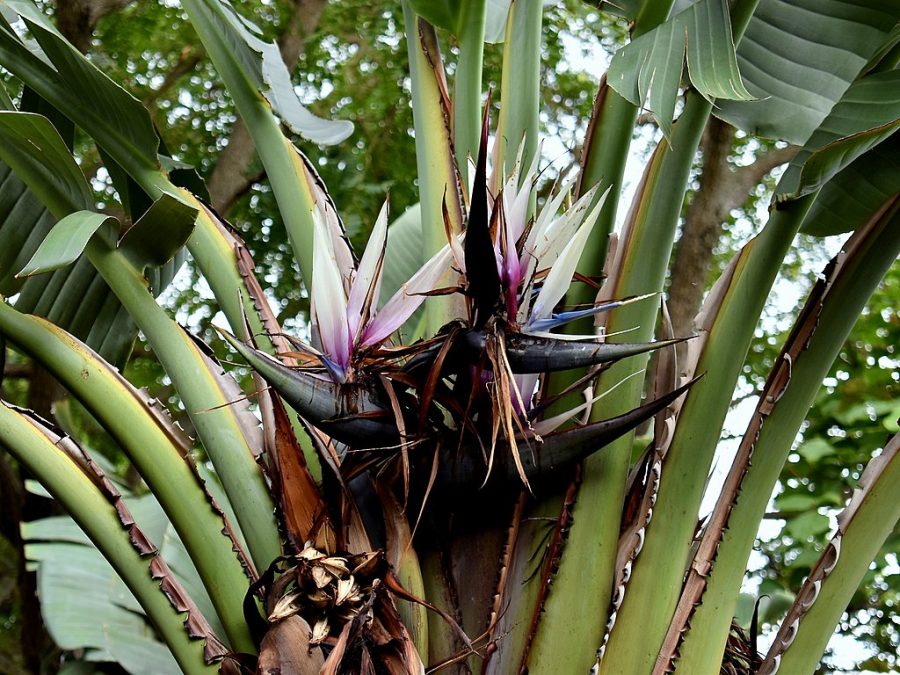
The Strelitzia nicolai, or “giant white bird of paradise,” is a stunning variety that can grow up to 30 feet tall in the right conditions.
It’s named for its large, white flowers and huge leaves, which can measure up to 7 feet long.
This variety is a bit more challenging to care for than the Strelitzia reginae, as it requires high humidity and frequent watering to stay healthy.
However, if you have the space and dedication to care for it, the Strelitzia nicolai can make a truly impressive statement plant.
Other Varieties
In addition to the Strelitzia reginae and nicolai, there are several other birds of paradise plants that you might come across.
These include the Strelitzia juncea, which has slender, reed-like leaves and small orange flowers, and the Strelitzia caudata, which has long, narrow leaves and large yellow flowers.
There are also several hybrid varieties available, such as the Strelitzia x parvifolia, which combines the orange and blue flowers of the Strelitzia reginae with the long, slender leaves of the Strelitzia juncea.
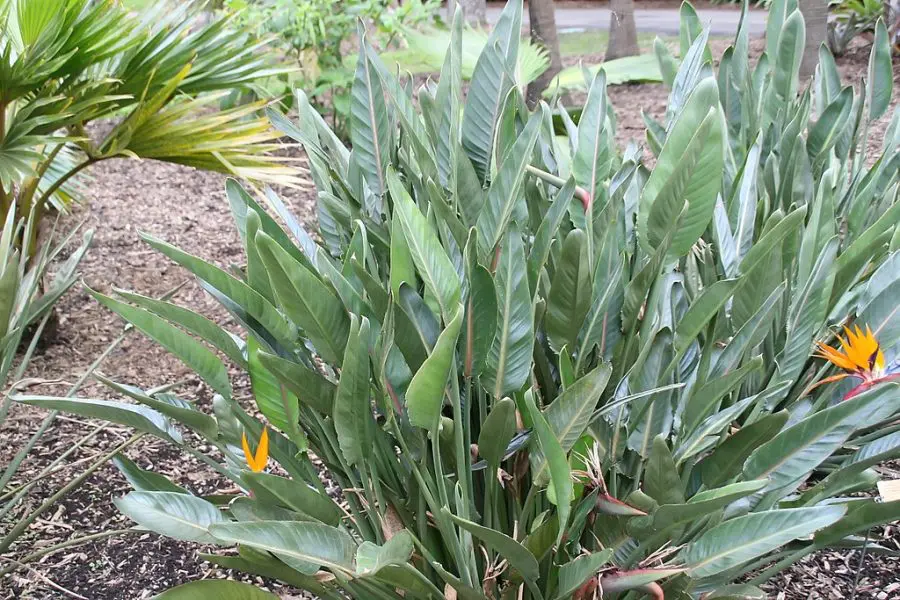
Whatever your taste, there’s a bird of paradise plant out there for you!
VI. Decorating Tips and Ideas
So you’ve got your beautiful bird of paradise plant and you’re wondering how to incorporate it into your home decor.
In this section, we’ll share some decorating tips and ideas to help you make the most of your new plant friend.
From choosing the right location to selecting the perfect pot and accessories, we’ll cover everything you need to know to create a stunning display that complements your personal style.
Whether you’re looking to add a tropical touch to your living room or create a relaxing oasis in your bedroom, we’ve got you covered. So let’s get started!
How to Style Bird of Paradise Plants Indoors
When it comes to styling your bird of paradise plant indoors, there are a variety of options to consider.
One popular approach is to make your bird of paradise plant the focal point of your room by placing it in a large, decorative pot and creating a statement display around it.
This can be done by adding other plants, such as ferns or palms, or by incorporating decorative items, such as books or candles.
Another option is to create a minimalist display by placing your bird of paradise plant in a simple pot and letting it stand on its own.
This can be especially effective if you have a modern or minimalist interior design aesthetic.
Pairing with Other Plants
Pairing your bird of paradise with other plants can create a lush and vibrant indoor garden.
When selecting plants to pair with your bird of paradise, it’s important to consider factors such as light and humidity requirements.
Some plants that pair well with the bird of paradise include monstera, philodendron, and snake plant.
You can also add a pop of color to your display by incorporating flowering plants such as orchids or bromeliads.
To create a layered effect, consider placing your plants at varying heights by using plant stands or shelves.
Bird of Paradise in Home Decor
Your bird of paradise plant can be a beautiful and striking addition to your home decor.
One popular approach is to select a decorative pot that complements the colors and textures of your existing decor.
For example, if you have a bohemian or earthy style, a rustic terracotta pot may be a good fit.
Alternatively, if you have a more modern or minimalistic style, a sleek and simple pot in a neutral color may be a better choice.
You can also accessorize your display by adding decorative items such as stones or seashells around the base of your pot.
Another option is to place your bird of paradise in a decorative basket or planter, which can add an additional layer of texture and visual interest to your display.
Bird Of Paradise Plant Care Indoors Conclusion
And there you have it – everything you need to know about bird of paradise plant care indoors!
We’ve covered the basics of caring for your plant, including light requirements, watering, soil, and temperature and humidity.
We’ve also discussed how to select the right pot and soil mix, how to prune and propagate your plant, and the different varieties of bird of paradise that you can choose from.
Lastly, we explored some creative ways to incorporate your bird of paradise plant into your home decor. With these tips and tricks, you’ll be able to care for your bird of paradise plant and enjoy its stunning beauty in your indoor space. Happy planting!
Recap of Bird of Paradise Plant Care Tips:
To recap, bird of paradise plants require bright, indirect light, moderate watering, well-draining soil, and a warm, humid environment.
They can be propagated through division or from seeds, and they benefit from occasional pruning to keep them looking their best.
Choosing the right pot and soil mix can also make a big difference in the health of your plant.
Bird Of Paradise FAQs
Bird Of Paradise plants, known for their majestic appearance, are a popular choice among indoor plant enthusiasts.
Cultivating them indoors can bring a tropical ambiance to any space. However, understanding their basic needs is key to ensuring they thrive and continue to brighten your space.
Below are some frequently asked questions regarding the care and maintenance of Bird Of Paradise plants indoors:
Q. How often should I water my Bird Of Paradise plant indoors?
A. Water the plant thoroughly, allowing the soil to dry out between waterings. Typically, watering once a week is sufficient, but this may vary depending on the humidity and temperature of your home.
Q. What type of fertilizer is best for Bird Of Paradise plants?
A. Use a slow-release fertilizer or a liquid fertilizer diluted to half-strength. Feed your plant during the growing season (spring and summer) for best results.
Q. How much sunlight does a Bird Of Paradise plant need indoors?
A. Bird Of Paradise plants thrive in bright, indirect light. Placing them near a north or south-facing window where they can receive plenty of light, but not direct sunlight, is ideal.
Q. Can Bird Of Paradise plants be repotted, and when is the best time to do so?
A. Yes, they can be repotted when they outgrow their current container.
The best time to repot is during the spring or early summer, which allows the plant to acclimate to its new environment during the growing season.
Bird Of Paradise Plant Care IndoorsFinal Thoughts:
Overall, bird of paradise plants are a stunning addition to any indoor space, with their beautiful flowers and lush green foliage.
With a little bit of care and attention, you can enjoy the beauty of these tropical plants right in your own home.
You can buy a Bird Of Paradise plant here
Read more about the benefits of keeping indoor plants










